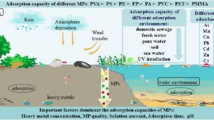Abstract.
In this study, we assessed the acute and chronic toxicity of sediments contaminated by bleached kraft pulp mill effluent (BKME). Sediments were collected in August 1991 and 1992, and May 1993 from eight stations exposed directly to the effluent and from four reference sites. Acute toxicity was determined for five macroinvertebrates (Hyalella azteca, Daphnia magna, Chironomus riparius, Hexagenia spp., and Tubifex tubifex) using pore water, elutriate, and bulk sediment exposures. Chronic toxicity was assessed using C. tentans and H. azteca (growth and survival) and D. magna and T. tubifex (reproduction) in bulk sediment exposures. Mortality declined with decreasing proximity to the outfall; acute toxicity (>20% mortality after 48 h) was observed at the two stations closest to the outfall (300 and 400 m). At 300 m, pore water was consistently more toxic than elutriate or bulk sediment phases, resulting in 100% mortality for all invertebrates except T. tubifex (23%). Elutriate exposures were toxic to C. riparius (88%), D. magna (54%), and Hexagenia (47%), but not H. azteca. Bulk sediments were toxic to Hexagenia (100%) and D. magna (88%), but not to C. riparius or H. azteca. In chronic tests, mortality in H. azteca and T. tubifex was highest at 300 and 400 m, indicating that toxicity observed in the short-term aqueous exposures adequately predicted long-term toxicity in bulk sediments. In both acute and chronic tests, mortality was significantly correlated with the concentration of extractable organic chlorines (EOCl) in the sediment, with LC50 values ranging from 4500 to 5500 mg EOCl/kg organic carbon. Growth of C. tentans larvae was depressed at 300 and 400 m in August 91 but enhanced in May 93 relative to the reference sites. Growth of H. azteca also declined near the outfall in August 91 sediments and was approximately one half that observed in 92/93 sediments; however, growth did not differ among stations in 92 or 93. Reproductive output in D. magna (neonates) and T. tubifex (cocoons) was highest at 300 and 400 m. In T. tubifex, the number of hatched young was lowest at these stations. This study provides evidence that toxicity may occur in sediments exposed to BKME, and emphasizes the need to incorporate sediment toxicity bioassessment as part of efforts directed toward remedial action in the pulp and paper industry.
Similar content being viewed by others
Author information
Authors and Affiliations
Additional information
Received: 28 May 1996/Revised: 17 September 1996
Rights and permissions
About this article
Cite this article
Sibley, P., Legler, J., Dixon, D. et al. Environmental Health Assessment of the Benthic Habitat Adjacent to a Pulp Mill Discharge. I. Acute and Chronic Toxicity of Sediments to Benthic Macroinvertebrates . Arch. Environ. Contam. Toxicol. 32, 274–284 (1997). https://doi.org/10.1007/s002449900185
Issue Date:
DOI: https://doi.org/10.1007/s002449900185




